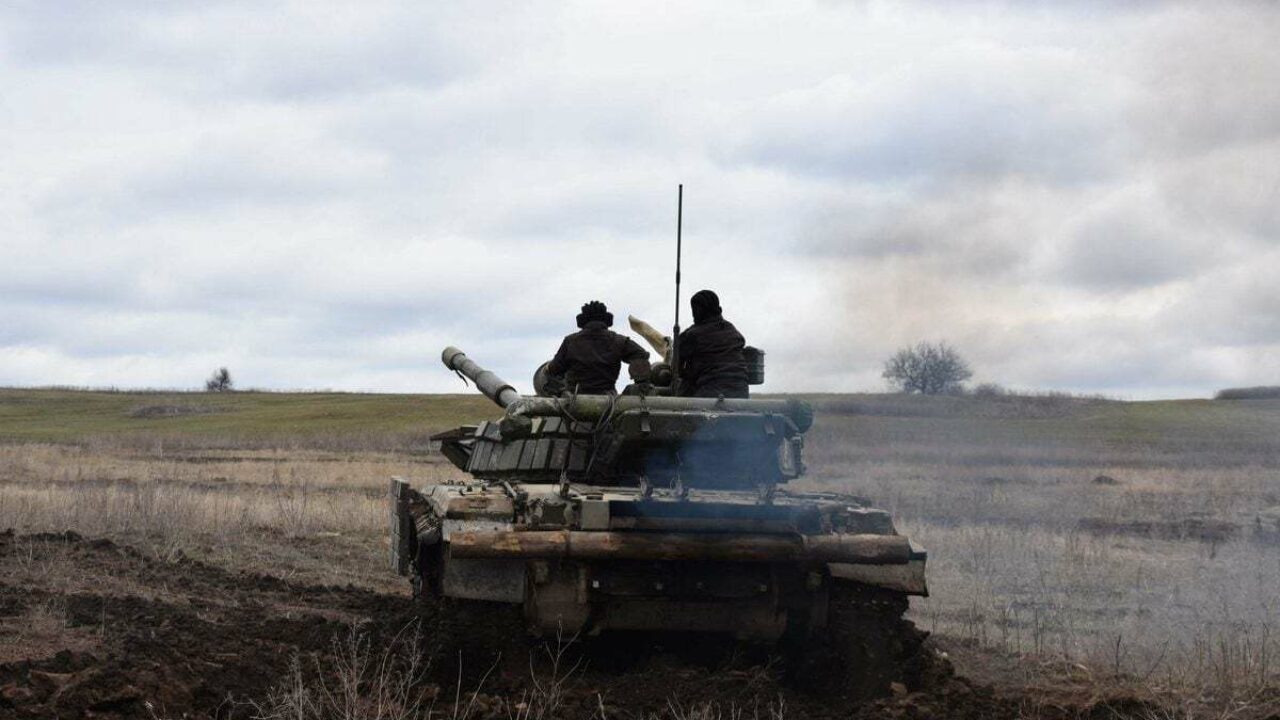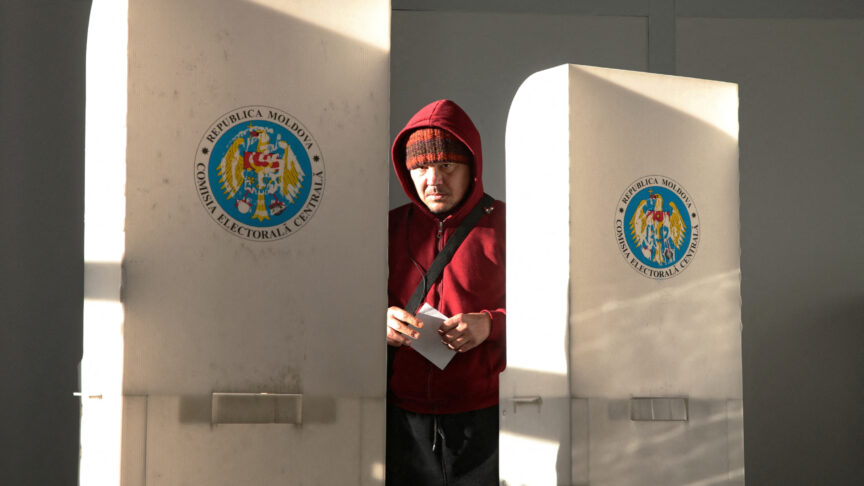Why Russia could invade Ukraine again
Many European leaders do not seem to grasp the seriousness of this moment in the Ukrainian conflict. Unless the West makes a greater effort to counter Russian military coercion, there is no guarantee that Russia will stop with Ukraine
In recent weeks, warnings about an imminent Russian invasion of Ukraine have stirred up a heated debate on how the West should respond. This was particularly apparent following the publication of an article by Samuel Charap, in which he argued that Ukraine needed to either accept the Russian interpretation of the Minsk agreement or face all-out war. The drama of the debate was heightened by a sketch of a possible Russian military operation against Ukraine in January provided by Brigadier General Kyrylo Budanov, deputy head of Ukraine’s military intelligence service. The sketch depicts the advance of 40 Russian battalion tactical groups from Crimea, Donbas, Voronezh, and Belarus – a manoeuvre designed to conquer all Ukrainian territory up to the Dnieper river, including Kyiv.
So, will Ukraine no longer be a sovereign state – following either its surrender or conquest – by next year? The situation is more complex than that depicted by some Washington think-tankers. There are many uncertainties in the calculations of both Russia and the West.
Firstly, this sketch of an invasion plan is in line with the recent build-up of forces along the Ukrainian border. The Russian armed forces are perfectly capable of executing such an operation. And the Russian leadership is determined to use military force to regain imperial control over Kyiv. But planning, rehearsing, and preparing for war is part of the military’s job description. That does not necessarily mean President Vladimir Putin will automatically follow war plans in this form. Military threats, including nuclear threats, have long been part of Moscow’s approach to coercive diplomacy. The West should be used to this by now.
An all-out invasion would certainly be costly for Moscow, in terms of not just international isolation but also loss of life and materiel. Since 2014, Ukrainians have paid a high price for their independence – and they treasure it. Their armed forces have improved in combat readiness and effectiveness. In particular, Ukraine’s seven air assault brigades – staffed by career soldiers – are a force to be reckoned with. And its mechanised forces performed well in recent clashes in Donbas.
Most of Ukraine’s military infrastructure remains in the west, a legacy of the cold war. Accordingly, even a quick initial Russian advance would not overrun much of this infrastructure.
Of course, there are gaps in Ukraine’s air defence and electronic warfare capabilities, which Russia would exploit. But the invasion would not lead to the kind of swift victory Russia won in Georgia in 2008, or could have won over Ukraine in 2014. This would give the West time to react in whatever manner it chose – which, in turn, would make the outcome of the war less predictable and controllable for Russia. However, one can only guess whether Putin believes there is a credible chance of a substantive Western reaction.
The other option often cited in the press is a strategic bombardment campaign. By conducting concerted air and missile strikes on Ukraine, Russia could avoid a bloody land battle. As Ukraine’s air defences rely on Soviet-era systems, Russian aerospace forces know how to detect, jam, suppress, and destroy them. But such a campaign could have a long target list: Ukraine is a large country that contains many military installations. NATO’s 1999 air campaign against Serbia, a much smaller nation, lasted for almost three months. And history is littered with examples of strategic bombing campaigns that hardened the defenders’ resolve rather than eroding it. As a Russian air campaign against Ukraine dragged on, the West would have time to react. Therefore, it is difficult to predict whether such a campaign would achieve the desired results.
Russia’s most likely course of action is to launch a limited offensive from Donbas. This would not fundamentally alter the stakes in the conflict – Moscow would deny involvement in it, even though everyone knew the contrary was true. As Russia’s aim would be to destabilise and disrupt rather than conquer, the operation would be swift. This would signal to Kyiv that it could not hide behind its army or Western support: either Ukraine accepted Russia’s conditions or risked further escalation. And, if the West put up little resistance, Russia could always switch to one of the other two options described above to achieve its goals. Alternatively, if things went badly for Russian-backed forces, it would be relatively easy for the Kremlin to abandon such an endeavour without losing its domestic credibility.
Kyiv may believe that it can either fight for independence now or be forced to do so later – probably in more challenging circumstances
A massive build-up of Russian forces along the Ukrainian border constrains Ukraine’s ability to react to a local offensive in Donbas – making such an operation more predictable and controllable for the Kremlin. Ukraine’s high-readiness forces would be dispersed across the country to guard against a possible incursion from other directions, meaning that they could not be thrown into battle in the east. With the Ukrainian front line exposed, Moscow would have greater freedom of action.
Hence, while the Russian military is making serious preparations for a war, this will not necessarily be an all-out war. Many lesser military scenarios are possible – even likely. As such, the West does not face a stark choice between either abandoning Ukraine or risking total war. It still has enough room to influence Moscow’s calculus, but this would require serious preparations as well.
Russia has a clear aim: to weaken Ukraine so much that it will be relatively easy to control the country’s politics. Moscow can achieve this by forcing Kyiv to implement the Minsk agreement on its terms – which would establish a de facto Russian veto on Ukrainian domestic affairs – and by starting and exploiting anti-government revolts. Alternatively, Moscow could pressure Washington to ‘deliver’ Ukraine by signing security guarantees that favoured Russia. These guarantees would prohibit Ukraine from not only joining NATO but also engaging in any form of cooperation with the West that would strengthen its resilience. This would eventually force Ukraine back into Moscow’s sphere of influence.
Given these considerations, Kyiv may believe that it can either fight for independence now or be forced to do so later – probably in more challenging circumstances. Therefore, Kyiv may believe that it is worth standing up against a militarily superior enemy.
The Finlandisation of Ukraine would have severe effects on the European Union. Not since Joseph Stalin forced ‘friendship and cooperation’ treaties on eastern Europe has any European country faced such harsh restrictions on its external relations. Back then, Finland was the only nation in the region to escape de facto colonisation by the Soviet Union. This was due to its military strength, iron political discipline, and cross-party cooperation on security matters – attributes that Ukraine does not have to the same extent.
If Russia’s coercive strategy works well, there is no guarantee that it will stop with Ukraine. Russia’s current alteration of the force structure in its Western Military District is partly directed against NATO. With Chinese-Russian military cooperation increasing, today’s imponderables may become tomorrow’s possibilities. American generals have long warned Europeans that, in the coming decades, the US may not be in a position to simultaneously protect its Asian and European allies against the threat of both China and Russia.
But Ukraine’s submission to Russian rule is not a foregone conclusion. To prevent this, the West will need to alter Putin’s calculations about the costs and benefits of direct military action: maintaining the status quo would have to be preferable to the anticipated consequences of such action. These consequences should not be limited to sanctions – even if the measures were harsh, Moscow would likely have priced them in. And, if Russia were to attack, NATO would need to make major alterations to its military posture on its eastern flank. These moves would be more credible if NATO forces deployed to Poland, Slovakia, or Romania, as they would underscore the alliance’s ability to react to any development. Putin, who is playing the long game, would prefer that these troops moved away again following such a deployment.
However, many European leaders do not seem to grasp the seriousness of the situation. One can see this in the defence of Nord Stream 2 in recently leaked German cables to members of the US Congress: Ukraine has a gun to its head, but the German government only seems worried about the survival of its pipeline. Berlin and Paris are resistant to a stronger NATO reaction – citing fears that Russia may feel threatened by a military capable Ukrainian state that has the support of the alliance. This is just the kind of poor judgement that enables Russian military aggression.
For now, many eastern and central European nations may feel secure in the assumption that Washington will protect them by placing Moscow under diplomatic and military pressure. But they should not be complacent: while certain groups of think-tankers have been arguing for concessions to Russia since 2014, their ideas have gained a new resonance this time. A Washington preoccupied with countering Beijing may soon be willing to turn these arguments into policy – not for their brilliance, but for their convenience.
The European Council on Foreign Relations does not take collective positions. ECFR publications only represent the views of their individual authors.



